
25 years ago history was made for several different reasons. Today, as we reflect on the invasion, on the assassination, and on the massacres, we come across multiple news articles which provide information and commentary on the events of that year. I wanted to take the time to document and highlight these articles as they’re worthy reads in providing information to readers around the world. I encourage you to read these pieces – they are vital to our understanding and they will inform Sikhs and non-Sikhs alike about events in our history.
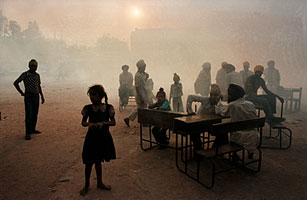 1. TIME magazine featured an article titled, “India’s 1984 Anti-Sikh Riots: Waiting for Justice.” Our readers have previously argued against the use of the word “riot” and suggested that “genocide” is the more fitting description of what happened. Regardless, this is an important article which discusses the often silent victims of 1984 – the widows and their children and the impact the events (and lack of justice) has had on their future.
1. TIME magazine featured an article titled, “India’s 1984 Anti-Sikh Riots: Waiting for Justice.” Our readers have previously argued against the use of the word “riot” and suggested that “genocide” is the more fitting description of what happened. Regardless, this is an important article which discusses the often silent victims of 1984 – the widows and their children and the impact the events (and lack of justice) has had on their future.
The widows’ colony in Tilak Vihar is a cheaply built and neglected cluster of homes, which were given by the government to hundreds of women and their children who survived what have become known as the anti-Sikh riots of 1984. But as the grim event’s 25th anniversary nears at the end of this month, crime, addiction and prostitution have taken root in what was supposed to be a survivors’ safe haven. Residents say this is because of the damage to the mental health of children who were witness to their parents’ and siblings’ murders and who grew up in impoverished homes and weren’t given any medical help — physical or mental — for their problems. [link]
Of note: for the 25th anniversary of the event, advertisements by Ensaaf — showing an old woman wiping away her tears, with the words, “25 years ago, our loved ones were burned alive in front of our eyes,” and in the next line, “Why has India, the world’s largest democracy, denied us justice?” — are scheduled for the month of November in the San Francisco Bay Area’s transit system!
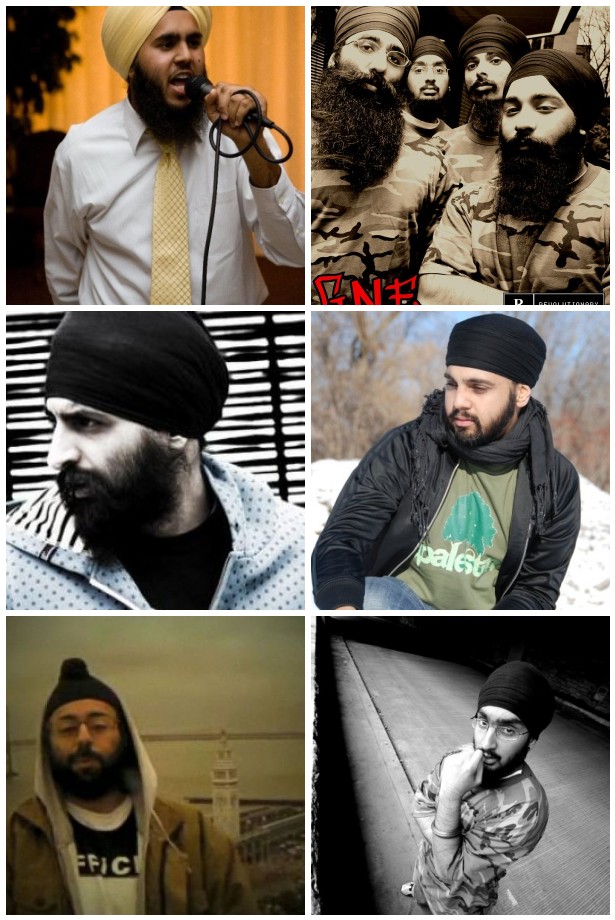 While everyone seems to be pretty excited about Kamaljit topping the Billboard charts – it seems that Jay Sean is not the only musician from our community who is gaining a ton of attention lately. In the October/November 2009 issue of East West magazine, an article by Navdeep Singh Dhillon titled, “The Brown Underground” discusses the five new names in hip-hop worth knowing. While on TLH we have featured these names in previous posts and are fans of their work – we wanted to highlight this new article as it provides a very intimate look at these artists. Musicians, rappers, emcees or whatever you may call them – they, at the end of the day, are regular guys (believe me, they are). They work, they go to school, they feel strongly about adversities that are going on all over the world. Unlike many, however, they are using their talent to channel that emotion into creativity and into their music. We definitely like what we’re hearing and whether they know it or not, these artists are paving a path for generations to come.
While everyone seems to be pretty excited about Kamaljit topping the Billboard charts – it seems that Jay Sean is not the only musician from our community who is gaining a ton of attention lately. In the October/November 2009 issue of East West magazine, an article by Navdeep Singh Dhillon titled, “The Brown Underground” discusses the five new names in hip-hop worth knowing. While on TLH we have featured these names in previous posts and are fans of their work – we wanted to highlight this new article as it provides a very intimate look at these artists. Musicians, rappers, emcees or whatever you may call them – they, at the end of the day, are regular guys (believe me, they are). They work, they go to school, they feel strongly about adversities that are going on all over the world. Unlike many, however, they are using their talent to channel that emotion into creativity and into their music. We definitely like what we’re hearing and whether they know it or not, these artists are paving a path for generations to come.
The article highlights the work of Canadian-based Humble the Poet and Sikh Knowledge, D.C.-based Saint Soulja of G.N.E., Hoodini from Los Angeles and Mandeep Sethi from San Francisco. You can read about their quest into this industry and how being a Sikh plays a role (or does not) in their music. What’s clear about these artists is that while they are Sikh, they don’t necessarily only rap about Sikh issues or only about issues affecting our community and that’s what makes them stand out in my mind. Injustice to any group is an injustice to humanity and as Sikhs, that is something we should resist. We can rest assured that these artists are having that dialogue.
 Guess what a British Asian family is hitting the reality TV scene … “Meet The Grewals” will begin filming 24/7 on November 4th in the UK. The three-generation family will be filmed for over eight weeks. Their lives will be aired as part of the iconic series, The Family, on Channel 4.
Guess what a British Asian family is hitting the reality TV scene … “Meet The Grewals” will begin filming 24/7 on November 4th in the UK. The three-generation family will be filmed for over eight weeks. Their lives will be aired as part of the iconic series, The Family, on Channel 4.
Director David Clews says: “I think the film captures both the big issues and the intimate moments of family life and I hope everyone will enjoy spending time with the Grewals in the same way I have.”
This past week I came across two videos that are just… cool. The videos are not necessarily Sikhi-related but they show everyday Sikhs in their element. This first video was taken at a U2 concert where a lucky fan [Amp Bains] was invited onstage to sing “Sunday Bloody Sunday” with Bono. So lucky.
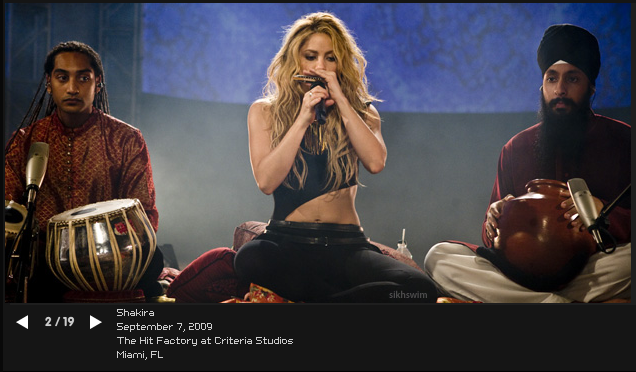
In this second video Shakira performs her new song Gypsy. One of her musicians in this video is Shamsher Singh, a Sikh from Florida (hat tip: Sikh Swim). The video can be viewed here.
 Jasmeet Kaur Sidhu is a 21-year-old aspiring journalist, who currently writes a climate blog for the Toronto Star (she even has The Langar Hall listed as one of her links!). She was recenly chosen as one of the Top 10 College Women for Glamour Magazine (hat tip: Maple Leaf Sikh). The award is usually given out to college students in the US, however, Jasmeet (a Canadian) was picked to be part of the group this year!
Jasmeet Kaur Sidhu is a 21-year-old aspiring journalist, who currently writes a climate blog for the Toronto Star (she even has The Langar Hall listed as one of her links!). She was recenly chosen as one of the Top 10 College Women for Glamour Magazine (hat tip: Maple Leaf Sikh). The award is usually given out to college students in the US, however, Jasmeet (a Canadian) was picked to be part of the group this year!
Jasmeet is the founder of the Peel Environmental Youth Alliance (PEYA), a network of students in the Peel Region working to implement environmental programs in all 220 Peel Region schools. She is currently studying Peace and Conflict Studies at the University of Toronto. Her dream is to become an international journalist.
As a sophomore, Sidhu wrote to the Toronto Star suggesting ways for the paper to improve its coverage. She was promptly asked to join the Community Editorial Board—the youngest member ever—and soon started writing opinion columns for the Star, Canada’s largest newspaper. Sidhu, whose family moved from Malaysia to Canada when she was a baby, has covered everything from HIV/AIDS in Africa to climate change. As the peace and conflict major says, “My mother used to deliver the Star when we first came to Canada. Now her daughter writes for the very same newspaper. Amazing, right?!”
I found this video of the Miss World Punjaban 2008 contest interesting because the contestant chose to highlight her Sikh identity that is intimately linked to Punjabi culture. I find that it is easy for us to “intellectually” talk about the separation of the two identities. However, for many, being Sikh and Punjabi are intimately connected. They mutually exist-one does not envision oneself without the other.
Ms. Gurpreet Kaur Khaira from Canada chose to highlight this co-existence of the two identities in the talent portion of the contest. She performs dhadi vaar, while wearing a simple white suit and kessari chunni.
Who is Miss Punjaban and what does she look like varies … there is not only one notion of Punjabi “beauty” or identity … at least in this beauty contest! You can sing dhadhi vaar in simplicity or a Punjabi song in a bright red chunni and kokaa.
(FAST-FORWARD TO 1:44 to see Ms. Gurpreet Kaur Khaira from Canada)

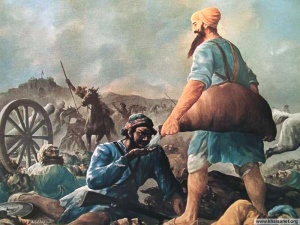 I’ve always enjoyed a good story…and amongst all the depressing news lately of our declining economy, raucous town hall meetings, and corrupt politicians…I often turn to StoryCorp’s podcasts for a quick “pick-me-up”. A few months back, I came across a beautiful piece titled “Finding El Dorado.” It’s the story of Gus Hernandez and the unique friendship he developed with Siddiqi Hansoti as a result of the current economic crisis. I was moved by this simple story of compassion and the power of the human spirit. Take a listen…it’s only 3 minutes [link].
I’ve always enjoyed a good story…and amongst all the depressing news lately of our declining economy, raucous town hall meetings, and corrupt politicians…I often turn to StoryCorp’s podcasts for a quick “pick-me-up”. A few months back, I came across a beautiful piece titled “Finding El Dorado.” It’s the story of Gus Hernandez and the unique friendship he developed with Siddiqi Hansoti as a result of the current economic crisis. I was moved by this simple story of compassion and the power of the human spirit. Take a listen…it’s only 3 minutes [link].
This story got me thinking about compassion and what it means to a Sikh. After some brief research, I found dozens of references to Daya (and its variations – Dayal, Dayala etc.) in the Sri Guru Granth Sahib Ji. Depending on the context, it is loosely translated as compassion, mercy or pity. Several times it is used as an attribute of Waheguru:
miharavaan kirapaal dhaeiaalaa sagalae thripath aghaaeae jeeo |3|
He is Merciful, Kind and Compassionate. All are satisfied and fulfilled through Him. ||3||
Other times it is used in the context of an Ardaas:
jath sath chaaval dhaeiaa kanak kar praapath paathee dhaan |
Please bless me with the rice of truth and self-restraint, the wheat of compassion, and the leaf of meditation.
But what I connected with the most was how compassion was described as a necessary attribute of the GurSikh:
dhaeiaa kapaah santhokh sooth jath gantee sath vatt |
Make compassion the cotton, contentment the thread, modesty the knot and truth the twist.
eaehu janaeoo jeea kaa hee th paaddae ghath |
This is the sacred thread of the soul; if you have it, then go ahead and put it on me.
 I’ll admit…Bollywood movies were boycotted and banned in my household as far back as I can remember, so maybe these “religious sensitivity pre-screenings” are common…but the course of events surrounding this new movie is still quite strange…even for Bollywood’s standards.
I’ll admit…Bollywood movies were boycotted and banned in my household as far back as I can remember, so maybe these “religious sensitivity pre-screenings” are common…but the course of events surrounding this new movie is still quite strange…even for Bollywood’s standards.
Last week, a new movie titled “Love Aaj Kal” was released, with Saif Ali Khan playing a Sikh as the lead male role. However, shortly before the release, the Punjab Cultural and Heritage Board objected to his portrayal of a Sikh.
Explaining their stand, Charan Singh Sapra, President of Punjabi Cultural And Heritage Board informed a tabloid, “We are objecting on the grounds that Saif is shown with a very trim beard.”
Long story short, after Khan’s formal apology and a paparazzi-filled press conference at Guru Singh Sabha Gurdwara, Dadar – 15 seconds of a questionable scene was cut from the movie and Khan declared he would not portray a Sikh “incorrectly” again in future roles. All smiles, the Punjabi Cultural And Heritage Board gave the movie “two thumbs up” and the green light to proceed.
I guess I should be happy that an organization is concerned enough about the image of Sikhs to raise such a fuss…except for the fact that we’re talking about fantasy-land. My question is…where is the organization that cares about the Sikh image in real life?
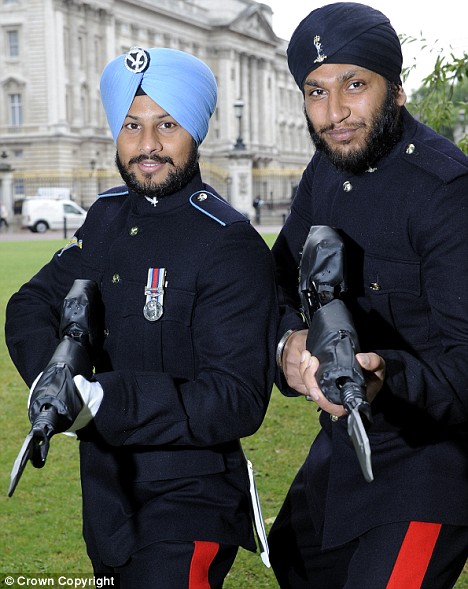 I was very impressed to see this great article (and cool pic!) in today’s Daily Mail. Along similar lines as last week’s post on the Blue Beret Kanhaiyas, it is wonderful to see Sikhs presented in this light…as confident and courageous soldiers in highly respected positions. Equally fascinating are some of the comments to the article which seem to be coming from mostly non-Sikhs, such as “Her Majesty is in safe hands with those two guarding her” and “Very smart they look too.” This is a far cry from the hate you’ll find on some of the military websites and blogs regarding the Sikh Coalition’s “Right To Serve” campaign. I hope this milestone and media attention of the Queen’s new guards will help serve as a stepping stone in this historic campaign here in the US.
I was very impressed to see this great article (and cool pic!) in today’s Daily Mail. Along similar lines as last week’s post on the Blue Beret Kanhaiyas, it is wonderful to see Sikhs presented in this light…as confident and courageous soldiers in highly respected positions. Equally fascinating are some of the comments to the article which seem to be coming from mostly non-Sikhs, such as “Her Majesty is in safe hands with those two guarding her” and “Very smart they look too.” This is a far cry from the hate you’ll find on some of the military websites and blogs regarding the Sikh Coalition’s “Right To Serve” campaign. I hope this milestone and media attention of the Queen’s new guards will help serve as a stepping stone in this historic campaign here in the US.
 Turbanology, or knowledge of Turbans, is a TV documentary recently released in the UK which explores the meaning of the turban in England since the London bombings. Filmmaker, Jay Singh-Sohal, was working for a conservative think-tank in the US when he first began considering the misconceptions surrounding the turban and the subsequent profiling of individuals and communities. The documentary discusses the origin and importance of the turban in modern Britain to “see whether it’s just harmless headwear or really the fashion of a fantatic”.
Turbanology, or knowledge of Turbans, is a TV documentary recently released in the UK which explores the meaning of the turban in England since the London bombings. Filmmaker, Jay Singh-Sohal, was working for a conservative think-tank in the US when he first began considering the misconceptions surrounding the turban and the subsequent profiling of individuals and communities. The documentary discusses the origin and importance of the turban in modern Britain to “see whether it’s just harmless headwear or really the fashion of a fantatic”.
The film addresses the impact 9/11 and 7/7 has had on the [mis]understanding of the turban as a symbol of fear, hatred and global terrorism. Australian researchers at the University of New South Wales published a study in 2008 which found that simply noticing someone could be a Muslim increased the aggressive tendencies on the part of non-Muslim westerners. They called it the “Turban Effect.” Turbanology seeks to raise awareness of the turban’s importance and discuss why the people who wear it consider it a crown. In the documentary, Jay Singh-Sohal speaks to music producers, politicians and ordinary Sikhs and Muslims who have been affected by wearing a turban. (A preview of the documentary can be seen after the jump).
“The documentary discovers that simply noticing someone could be a Muslim increases the aggressive tendencies of westerners. The give-away sign is the turban, and the beard. Whether conscious or sub-conscious, the fact that terrorism is a worry for many people means that there’s been a rise in profiling who could be a threat – an issue explored in the piece.” [link]
Oh India. You can’t hide the skeletons in your closet forever.
It appears that the US Commission on International Religious Freedom was on its way to India this week. (The USCIRF is a federal group that works to promote freedom of thought, conscience and religion; protect people from abuses like detention, killing and torture; and challenge religious intolerance and repression throughout the world.) Well, they were scheduled to go, had their tickets ready and their bags packed. But India’s administration decided that they weren’t welcome in India.
It’s really quite ironic. The Congress party’s recent Parliamentary win over the BJP has been seen as an explicit rejection of the religious intolerance that the BJP represents (though it may have had more to do with support for Congress’ economic policies). Yet it is the Congress party administration that has refused USCIRF entry. Maybe the Congress party’s sound defeat of the BJP has swelled the Congress Party’s confidence a little too much.
New Delhi knew that the USCIRF team was scheduled to leave on June 12, but the visas just didn’t get stamped in time. Was it just a rare and regrettable oversight? [After all, with so many tourists flooding the country, a few visas could fall through the cracks right? (HA!)]
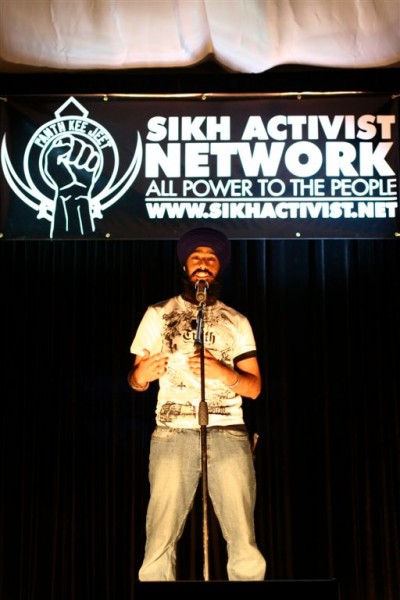
It is often said that a revolution begins not with the sword but with the pen. However, last Friday night in a packed banquet hall in the Toronto suburb of Malton, I witnessed a revolution begin with the microphone.
At an event entitled “When Lions Roar”, fantastically organized by the Sikh Activist Network, one young artist after another got on to the mike and paid homage to the lives destroyed in 1984. I was blown away by the talent and passion displayed by the performers. Through the art of spoken word, music, and action, each of the 26 acts put a different face on the impact of June 1984. They were all unique in their perspective, but all shared one common thread: 1984 is just too important to forget.
Over 1000 people gathered to attend the 4+ hour event. They covered the entire spectrum of Sikh life. This was not your typical retreat and kirtan crowd. In fact, the diversity of performers and audience has challenged me to rethink my stereotypes about who cares about 1984 and the future of the Sikh panth. Individuals that I would have never suspected of having even a passing interest in Sikhi or the Sikh community, would come up to the mike and speak with such energy, insight and emotion. They often reduced me to tears. And most amazing was the fact that almost all of them weren’t even alive in June 1984.
For a thirty-something guy like me who has always considered myself part of the “youth”, it was indeed a little bit humbling to realize that, while I’d probably still be the youngest guy at a Youth Akali Dal meeting, I’m now probably a generation or two above the youngest Sikh leaders. Which means me and my fellow Generation X-ers need to spend less time trying to do it all ourselves, and more time using our resources to enable the next wave of younger Sikhs to establish their own voice and institutions. We were the first generation coming through the diaspora, with little support from our elders. However, we can make it easier on our younger brothers and sisters. We can provide them seed funding to start their dreams, connect them those that can help them along the path, and help coach them through their challenges.
As you’ll see from the videos and photos, the next generation has indeed stepped up, their language of change is hip-hop and I think they’re gonna be alright.
Click through for videos and pictures.
He locked the washroom door, unravelled the nine-metre turban, took a pair of scissors and started cutting. Ten minutes later, three feet of hair lay in a pile and Charanbir Singh sat down and cried.
Outside, his parents and grandmother were in tears. Two friends persuaded him to come out, but Charanbir, his head wrapped in a towel, rushed to his room.
That was a year ago. Charanbir, now 17, still shudders at the memory. “I had to cut my hair.” (Link)
One of ironies of life in the 21st century western world is that despite an unparalleled degree of freedom of religion, the majority of people seem to be opting for freedom from religion.
Last week, Raveena Aulakh, a reporter from the Toronto Star, put a Canadian twist on the worldwide issue of apostasy amongst Sikh Youth.
Sikhism dates back to 15th-century India. Adherents are required to not cut their hair, considered a visible testament to their connection with their creator. The turban was adopted to manage long hair and make Sikhs easily identifiable.
For many young men in Greater Toronto, that is the problem: They don’t want to stand out.
Like other new or second-generation immigrants, many Sikh youngsters are desperate to fit in with the school crowd, while others complain of racism because they wear the turban. Add to that cultural influences, peer pressure and the desire to assimilate.
The end result? Many youngsters cut their hair, leading to family friction and, in some cases, lasting estrangement.
As a counterpoint, in the article and video above, Pardeep Singh Nagra (of boxing fame) presents his thoughts on why he’s decided to keep his hair.
Fear & Guilt
I’ve often wondered why so many Sikh youth keep their hair through high school but cut it as soon as they feel free from their parent’s control? From my perspective I see this as symptomatic of a great challenge facing Sikhs around the world today. Somehow, someway, we have fallen into the trap of pushing Sikhi to the next generation with fear and guilt, rather than sharing Sikhi through love.
Take your typical Sikh family; actually take mine. My now 25 year old cousin in Punjab had wanted to cut his hair since he was a teenager but two things stopped him. He was afraid that if he cut his hair his dad would beat him and then disown him. Secondly, he knew that if he did get a haircut and shave he wouldn’t be able to look his crying mom in the eye.
Unfortunately, there was little positive reinforcement around Sikhi in his life. Sure there was Sikhi by osmosis: visiting Gurdwaras, gurbani playing in the background, the odd sakhi told by our visiting grandfather. However, my cousin had little exposure to the aspects of Sikhi (nitnem, kirtan, seva, simran) that would have connected him with his faith on a deeper level. Most of the discussions with his parents were a flavour of the famous Goodness Gracious Me clip. So not surprisingly, upon entering college, he too cut his hair. And sure enough, he became our family’s black sheep, making a kid with already low self-esteem, feel even worse.
This past weekend, as I was talking to a Punjabi Sikh woman who came to the United States about 13-14 years ago, I heard how agency and perseverance define the experiences of immigrant women in the United States. She told me about the great new apartment she just got for her family and how the laundry is free. A new apartment building with free laundry, that is absolutely awesome! Her smile, confidence, and enthusiasm were strongly lined with struggle and hard work; although she never directly said it. Her hard work and perseverance resounded clearly and loudly as it lay nestled in her comment about how her children had seen a lot of struggle in their lives. This statement meant that they had witnessed her struggle to provide the basic necessities in life, which means not always having access to the privileges other children gain more easily. I sensed her confidence in her and her family’s work ethic, but also her own guilt of not being able to provide more.
This month, New America Media (NAM) released the results of a historic poll on woman immigrants to America. Often the experiences of women immigrants are not fore grounded in immigration research. They and their children are general viewed as the “dependents” of the sojourner husband/father. Their struggle, as the one mentioned above, are rarely brought to the center of the immigrant narrative.
Breakthrough is an innovative, international human rights organization using the power of popular culture, media, leadership development and community education to transform public attitudes and advance equality, justice, and dignity. Through initiatives in India and the United States, Breakthrough addresses critical global issues including violence against women, sexuality and HIV/AIDS, racial justice, and immigrant rights. [link]
A friend directed me to this video which reflects the use of media to educate society about human rights issue. The video I have included below is one of many produced by Breakthrough, an organization whose aim is to create a culture of human rights. “Breakthrough’s multi-media campaign, “Is This Justice?” aims to bring public attention to the stigma and discrimination faced by women living with HIV/AIDS-most of whom have been infected by their husbands or male partners.” I found this piece, titled A man looks at me but I’m the one who is being punished, to be quite powerful. Is this justice?
More Sikh (or being promoted as Sikh) products are launching- I’m referring to the new tv channels: 1) The Sikh Channel– which is replacing Brit Hits TV and 2) Punjjabi TV…
Punjabi and Sikh people finally have the opportunity to watch programs in their mother tongue with the launch of a dedicated Sikh channel on Sky digital 840 and the perceived arrival of Punjjabi TV coming on air as early as Monday next week. [link]
Does this increase in Sikh products mean that Sikhs will have a platform and voice which we’ve been lacking before? Not necessarily. Zee Punjabi and many other channels have already been targeting Punjabi and Sikh audiences. So far it seems like these new channels will continue to provide the same coverage as earlier channels- sitcoms, kirtan, music, and some non-controversial news. There’s very little information available online about these channels thus far, and I’m interested to know whether they’re owned by Sikhs or just targeting a Sikh audience.
Regardless of the owners, the launch of these channels does signal that at least some parts of our community are gaining economic and social power, at least in the UK where these channels seem to be based. And perhaps (depending on who the owners are) these channels can serve as platforms for discussing ideas that other news forms avoid, out of a desire to remain non-controversial. Or perhaps it’ll be more of the same.
I am a loyal listener of Chicago Public Radio’s weekly series, “This American Life.” No matter how many different types of media are out there, I still find the radio documentary to be a powerful medium. Since I can’t always catch it when it’s on, I made a point to subscribe to their weekly podcast.
A few months ago, I heard this fascinating story about Reverend Carlton Pearson, a renowned evangelical pastor in Tulsa, Oklahoma. This story talks about his rise in the evangelical arena, and his eventual fall because of his doubts in the belief of hell. He wondered if a loving God would really condemn most of the human race to burn and writhe in the fire of Hell for eternity. He then started preaching the theology of “inclusion-ism” which believed God was all-loving, regardless of what path he or she chose. He was ultimately declared a heretic by the church.
When I originally heard this, it made me think of how the concept of Ik Onkar would fly in the evangelical community. Take a listen…I’d be curious to hear what others think.
As we remember 1984 through concerts and acts of rebellion, let’s not forget the visceral spirit displayed by Singhs IN that time period.
Watch below the original version of a Punjabi kavita sung by Bhai Gursharan Singh during those turbulent times in Manji Sahib Hall located in the Darbar Sahib complex . This kavita captures the mood and spirit of those days. Tigerstyle later used it in one of their Shaheedi CDs to REMEMBER that spirit.
Intellectually, we can try to REMEMBER those days; but this kavita actually makes us FEEL how it was to live through that time.

Radio Free Afghanistan 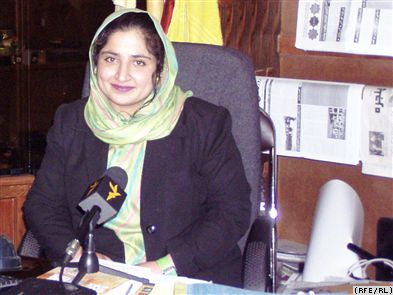 just chose Anarkali Honaryar for their “Person of the Year” award. Coincidentally, Anarkali is a member of Afghanistan’s minority Sikh community. At 25 years old, Anarkali is also a physician, a human rights activist, a member of Afghanistan’s Constitution Committee, and works for the Independent Human Rights Commission of Afghanistan. Oh, and she finished high school at 12.
just chose Anarkali Honaryar for their “Person of the Year” award. Coincidentally, Anarkali is a member of Afghanistan’s minority Sikh community. At 25 years old, Anarkali is also a physician, a human rights activist, a member of Afghanistan’s Constitution Committee, and works for the Independent Human Rights Commission of Afghanistan. Oh, and she finished high school at 12.
Wow. I think another fitting title would be Sikh Role Model of the Year (or the decade?). She has definitely just become my role model. And we can definitely add her to our list of sheroes.
Just what exactly was Anarkali given this award for?
She is well-known for helping women who suffer from domestic abuse, forced marriages, and gender discrimination. Honaryar is also an advocate on behalf of Afghanistan’s small, embattled Hindu minority, which lives in squalid conditions and faces harassment and discrimination. “We are thrilled to recognize Anarkali for her tireless work in promoting democracy, human rights, and civil society in Afghanistan,” said Radio Free Afghanistan Director Akbar Ayazi. “Anarkali has been taking part in Afghanistan’s reconstruction since she was a teenager — this recognition is well-deserved.” [Radio Free Europe]
I’m a bit of an NPR Junkie, and one of my favorite series I listen to is called This I Believe. This I Believe is a national media project that engages everyday people in writing, sharing, and discussing the core values and beliefs that guide their everyday lives. I’ve been following the series for quite some time now, but last week, I came across a story that really moved me – it’s called Finding Freedom In Forgiveness.
In 1984, Jennifer Thompson -Cannino testified that Ronald Cotton was the man who raped her. Eleven years later, DNA evidence cleared him of the crime.
This story speaks to the healing power of forgiveness.
Although I haven’t heard many Kirtanis or Granthis speak about this topic much, Guru Sahib in fact has much to say about “Khima” (Forgiveness). As I’m starting to research and reflect on this concept through Gurbani, I came across this line that I immediately connected with. From Bhagat Kabeer Ji, page 1372:
jehaa lobh theh kaal hai jehaa khimaa theh aap |155|
Where there is greed, there is death. Where there is forgiveness, there is God Himself.
Finding Freedom in Forgiveness is less than four minutes long and worth the listen. I would love to hear what others think of this audio essay and perhaps an experience of your own as you’ve discovered forgiveness on your own journey…


